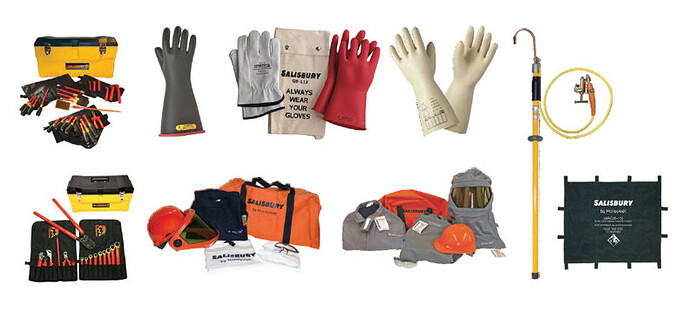OSHA 1910 Subpart I lays down the fundamental rules governing the use of Personal Protective Equipment (PPE) in workplaces. These regulations are designed to safeguard workers from a range of hazards they might encounter on the job. In this summary, we will delve into ten key provisions of this subpart to provide a clear understanding of its requirements.
Related: Electrical Shock and Arc Flash PPE Overview
1. Provision and Maintenance of PPE (1910.132(a))
Employers must provide PPE and ensure its proper maintenance, including equipment for eyes, face, head, extremities, protective clothing, respiratory devices, and shields. This obligation arises when there is a risk of injury due to various workplace hazards.
2. Responsibility for Employee-Owned PPE (1910.132(b))
When employees bring their PPE, employers are responsible for ensuring its adequacy, maintenance, and sanitation. Employee-owned equipment should meet safety standards.
3. Safe Design and Construction (1910.132(c))
All PPE should be designed and constructed with safety in mind, tailored to the specific tasks and hazards employees face in their roles.
4. Hazard Assessment and Equipment Selection (1910.132(d))
Employers must assess the workplace for potential hazards that necessitate the use of PPE. They must then:
-
Select suitable PPE for employees based on identified hazards.
-
Communicate these selections to employees.
-
Ensure the chosen PPE fits properly.
5. Certification of Hazard Assessment (1910.132(d)(2))
Employers must document their hazard assessments, including details about the workplace, the person conducting the evaluation, assessment dates, and the document’s certification as a hazard assessment.
6. Defective and Damaged Equipment (1910.132(e))
Defective or damaged PPE should never be used, as it poses a serious risk to worker safety.
7. Training Requirements (1910.132(f))
Employers are obligated to provide comprehensive training to employees required to use PPE. Training should cover:
-
When PPE is necessary.
-
Identifying the specific PPE required.
-
Proper procedures for donning, doffing, adjusting, and wearing PPE.
-
Understanding the limitations of PPE.
-
Maintenance, useful life, and disposal of PPE.
8. Retraining (1910.132(f)(3))
Retraining is essential in specific situations, such as when workplace changes render previous training obsolete, or when inadequacies in employee knowledge or use of PPE are identified.
9. Specific Application (1910.132(g))
Certain sections, such as paragraphs (d) and (f), apply only to specific regulations (e.g., 1910.133, 1910.135) and not to others (e.g., 1910.134, 1910.137).
10. Cost Considerations (1910.132(h))
-
Generally, employers must provide PPE at no cost to employees.
-
Exceptions include non-specialty safety-toe protective footwear and non-specialty prescription safety eyewear when allowed off the job-site.
-
Employers are not obligated to reimburse employees for certain items like logging boots, everyday clothing, or weather protection gear.
-
Replacement PPE is the employer’s responsibility, except in cases of loss or intentional damage.
-
While employees can use their PPE, employers cannot mandate employees to provide or pay for their PPE, except under specific conditions outlined in the regulation.
Summary
OSHA 1910 Subpart I sets essential guidelines for the use of personal protective equipment in workplaces. These regulations are vital for ensuring employee safety by stipulating the provision, maintenance, hazard assessment, training, and cost considerations related to PPE. Compliance with these regulations is essential to create a safe working environment and reduce the risk of workplace accidents and injuries.

